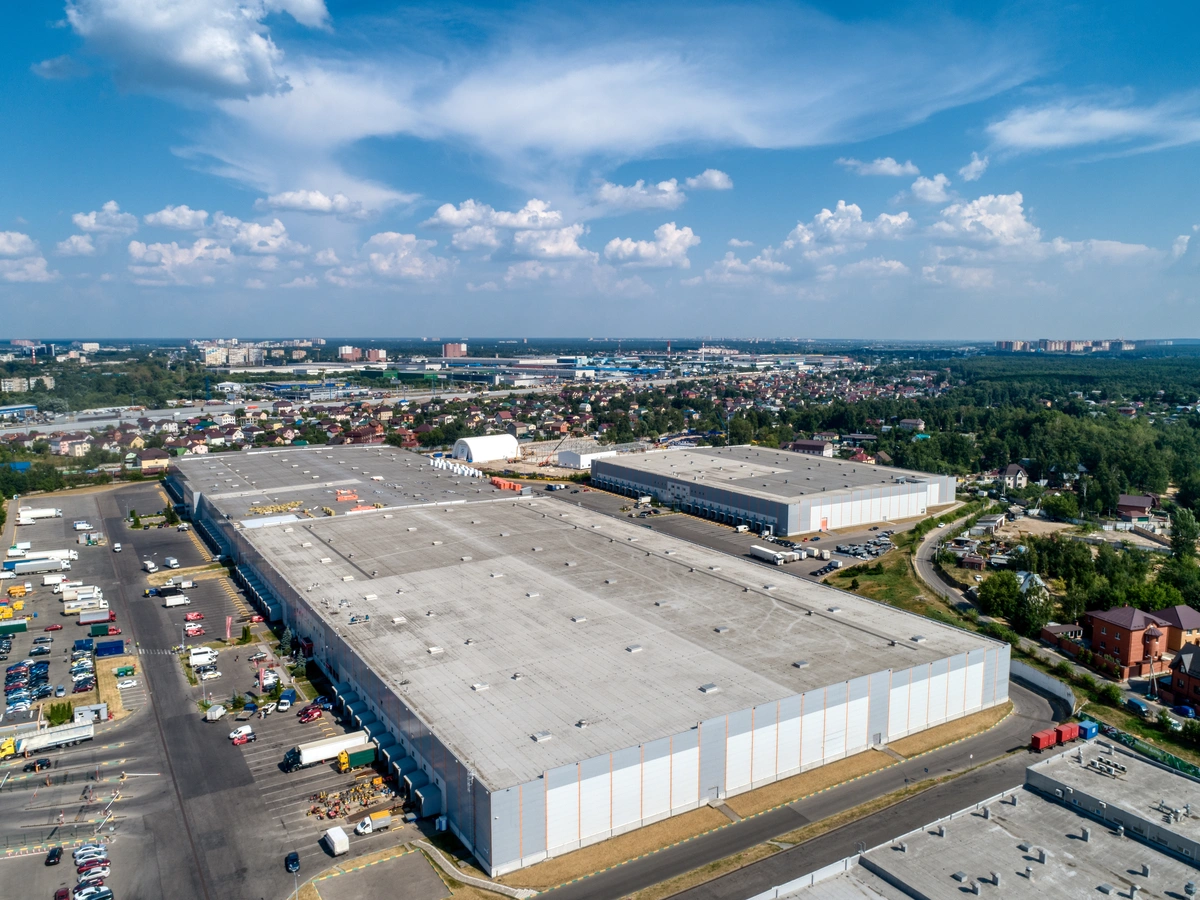Maintaining the integrity of your commercial building’s roof is crucial for protecting your investment and ensuring the safety of everyone inside. Over time, wear and tear can take its toll, leading to the need for a roof replacement.
In this guide, we’ll delve into:
- The signs that indicate it’s time for a commercial roof replacement
- The most common roofing materials used in commercial settings
- The roof replacement process
- How long it will take
- The associated costs

Signs That You Need to Replace Your Commercial Roof
Knowing when to replace your commercial roof can be tricky. Here are some common signs that it might be time:
- Age: The age of your commercial roof is one of the most significant factors in determining whether it needs replacement. Most commercial roofs have a lifespan of 20 to 30 years, depending on the material used and maintenance practices.
- Leaks and Water Damage: If you notice water stains on the ceiling, mold growth, or persistent leaks after heavy rain, it could indicate underlying roof damage that warrants replacement.
- Visible Wear and Tear: Cracked, curled, or missing shingles, as well as blistering or peeling of the roofing material, are visible signs of deterioration that may necessitate replacement.
- Sagging or Uneven Roof Surface: A sagging or uneven roofline suggests structural issues that require immediate attention and often involve replacing the entire roof.
- Increased Energy Bills: A poorly insulated or damaged roof can result in increased heating and cooling costs as air escapes through gaps or inadequate insulation.
The Most Common Commercial Roofing Materials
Are you considering switching to a new commercial roof material? Here are some of the most popular ones:
- Built-Up Roofing (BUR): Comprising multiple layers of bitumen and reinforcing fabrics, BUR provides durability and waterproofing, making it suitable for low-slope or flat roofs.
- Single-Ply Membrane: Popular options include Ethylene Propylene Diene Monomer (EPDM), Thermoplastic Polyolefin (TPO), and Polyvinyl Chloride (PVC), known for their flexibility, UV resistance, and ease of installation.
- Metal Roofing: Metal roofs offer longevity, fire resistance, and energy efficiency, making them a preferred choice for commercial buildings.
- Modified Bitumen: Similar to BUR but incorporating polymer-modified bitumen sheets, this material offers enhanced flexibility and durability.
- Roof Coatings: Applied over existing roofs, roof coatings provide an additional protective layer, improving energy efficiency and extending the roof’s lifespan.
The 5-Step Roof Replacement Process
If you’ve never had your commercial roof replaced before, you may not know what to expect. Below, we’ve included common steps in the process.
1) Assessment and Planning:
A professional roofing contractor will conduct a thorough inspection to assess the condition of the existing roof, identify any underlying issues, and recommend the most suitable replacement options.
2) Preparation:
This involves removing the old roofing material, repairing any damaged substrate, and ensuring proper ventilation and insulation.
3) Installation:
The chosen roofing material is installed according to manufacturer specifications, including layers, adhesives, and fastening methods.
4) Finishing Touches:
Flashing, sealants, and edge details are installed to ensure waterproofing and durability.
5) Final Inspection:
The completed roof undergoes a final inspection to verify compliance with building codes and quality standards.
How Long Does It Take To Replace a Roof For a Commercial Building?
The duration of a commercial roof replacement project varies depending on factors such as the size and complexity of the roof, weather conditions, and the chosen roofing material. Typically, the process can take anywhere from a few days to a few weeks to complete.
Costs to Replace Your Commercial Roof

The cost of replacing a commercial roof depends on several factors, including the size of the roof, the choice of materials, labor costs, and any additional services required, such as insulation or structural repairs. On average, you can expect to pay between $5 and $15 per square foot for a commercial roof replacement. However, it’s essential to obtain quotes from multiple contractors and compare them carefully to ensure you’re getting the best value for your investment.
Your Commercial Roofing Experts
Replacing a commercial roof is a significant undertaking that requires careful planning, expert craftsmanship, and attention to detail. By being aware of the signs that indicate it’s time for a replacement, understanding the different roofing materials available, and knowing what to expect during the replacement process, you can make informed decisions to protect your building and ensure its longevity. If you’re considering a commercial roof replacement, be sure to consult with a reputable roofing contractor to assess your options and develop a plan that meets your needs and budget.
Contact Open Box Roofing to learn about your commercial roof replacement cost and more!






